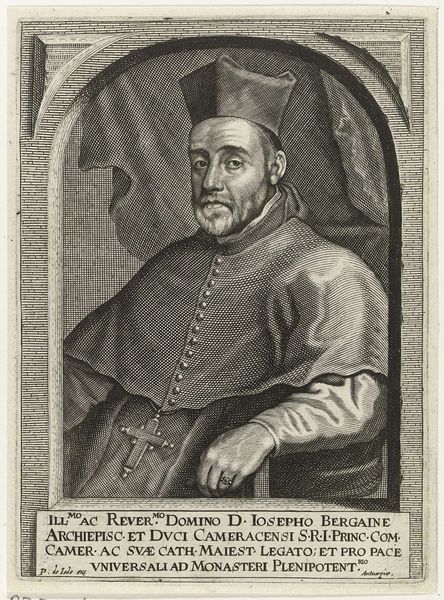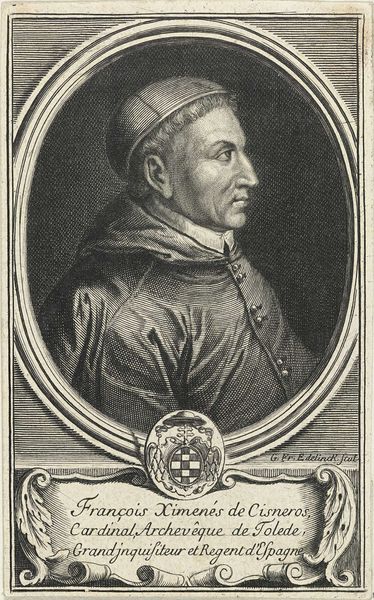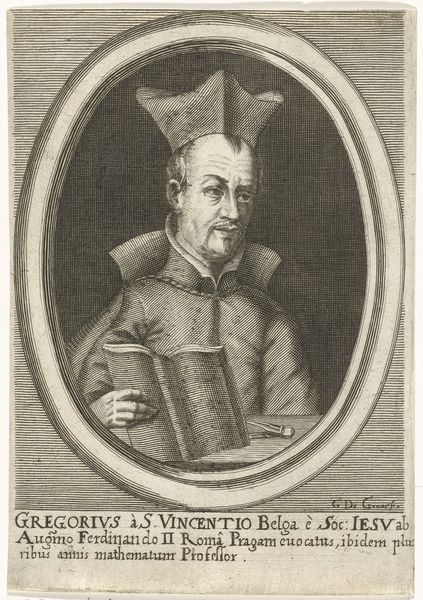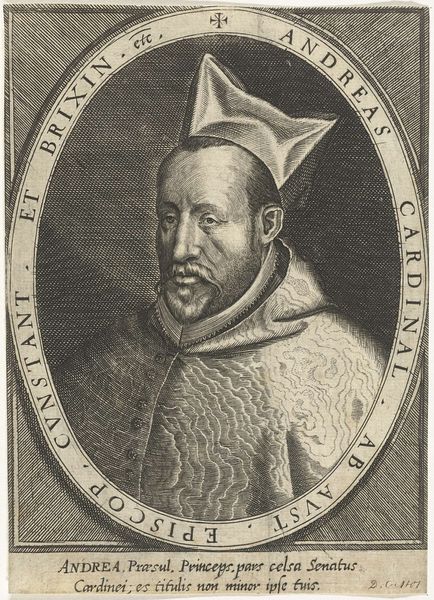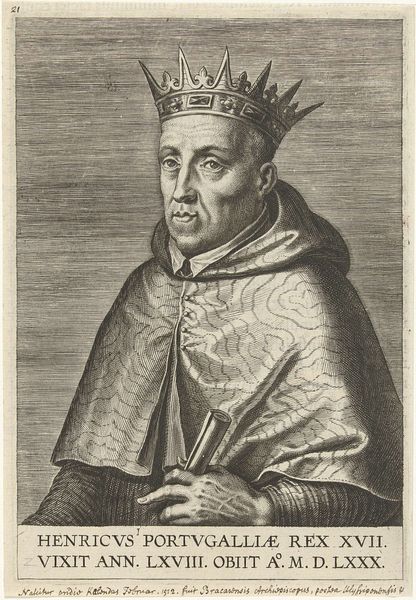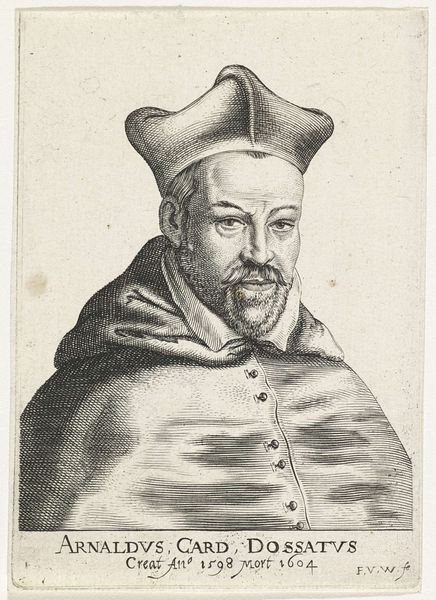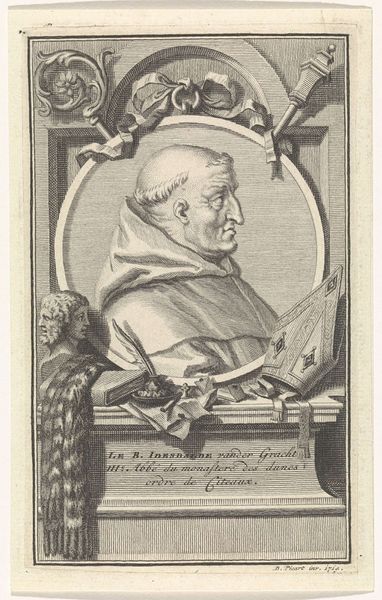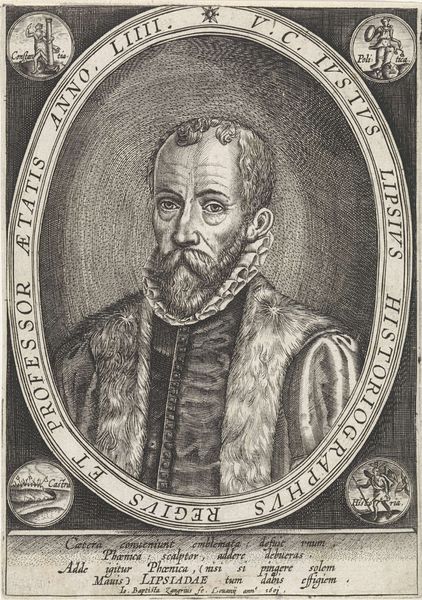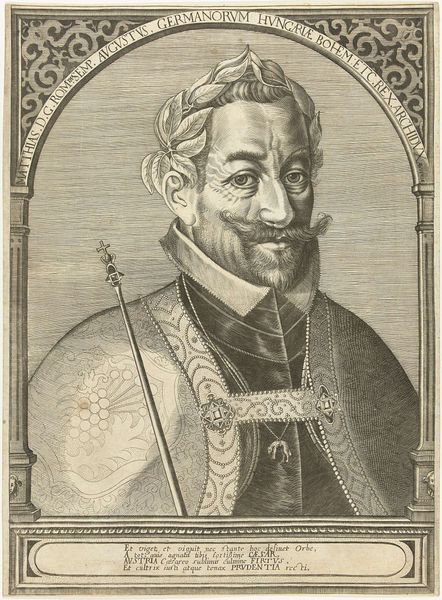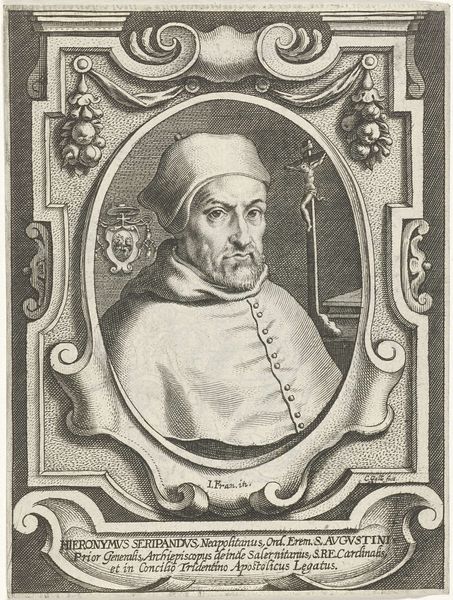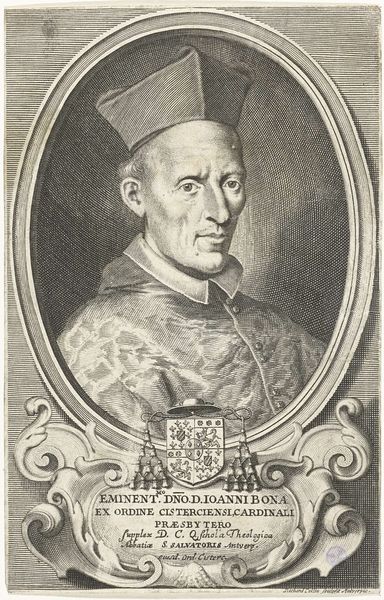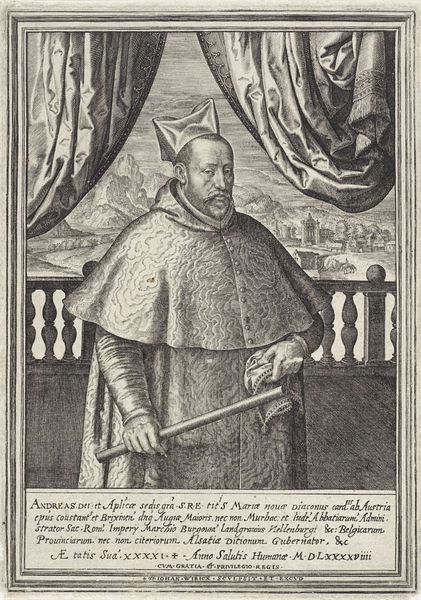
engraving
#
portrait
#
baroque
#
engraving
Dimensions: height 170 mm, width 118 mm
Copyright: Rijks Museum: Open Domain
Editor: Here we have "Portret van bisschop Johannes Wachtendonck," made sometime between 1633 and 1673 by Coenraet Waumans. It's an engraving, and what strikes me is how the sharp lines seem to want to convey power, or maybe unwavering conviction. What's your reading of this portrait? Curator: Well, immediately I’m drawn to the visual strategies Waumans employs. Consider the function of portraits during this period, particularly engravings like this one. This wasn't just about likeness, it was about disseminating an image and a *message.* Who was Wachtendonck, and what message was Waumans, consciously or unconsciously, promoting? Editor: Based on his clothing and the inscription, I would guess Wachtendonck held a significant position in the church. The fleur-de-lis on the coat of arms hints at ties to French or perhaps religious institutions too, but is the message that a portrait relays also shaped by things such as the format and material of the art itself? Curator: Exactly. The decision to use an engraving is crucial. Engravings allowed for wider distribution, thus extending Wachtendonck's influence through visual representation. It's not simply a likeness, it's a form of propaganda, reinforcing institutional power through reproducible imagery. The sharp lines contribute to a sense of authority and permanence. How might that relate to religious reform in this period? Editor: I see, the engraving's replicability means it becomes a tool to solidify the bishop's presence, and the institution he represents, within the public sphere. I hadn't thought of it as propaganda before. Curator: Think of it less as "propaganda" in a negative sense, and more as image management. This print plays a role in crafting and maintaining the public persona of a religious leader at a time of significant religious and political upheaval. I find the choice to emphasize the sitter’s commanding gaze incredibly important. What about you? Editor: Now I understand better that this piece is doing more than documenting someone's face. It’s involved in a larger conversation about power, influence, and the role of religious figures in society. Thanks!
Comments
No comments
Be the first to comment and join the conversation on the ultimate creative platform.
